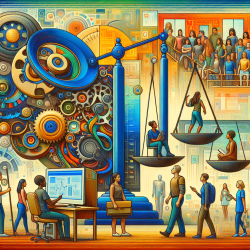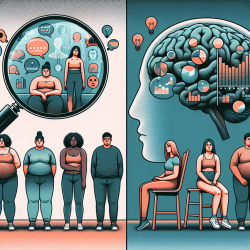Introduction
In the age of digital transformation, algorithms play a pivotal role in shaping decision-making processes across various sectors, including education and healthcare. However, the notion that algorithms are inherently neutral has been challenged by recent research, such as the study "Algorithms are not neutral" by Catherine Stinson. This blog aims to provide insights for practitioners in the field of special education and online therapy, helping them understand and mitigate algorithmic bias in their practices.
The Nature of Algorithmic Bias
Algorithmic bias occurs when the outcomes of algorithmic processes systematically disadvantage certain groups. This bias can stem from various sources, including biased data, biased individuals, and the algorithms themselves. The research highlights that algorithms, particularly those used in collaborative filtering, can introduce statistical biases that lead to discriminatory outcomes.
Implications for Practitioners
For practitioners in the field of special education and online therapy, understanding algorithmic bias is crucial. Here are some key takeaways and actions they can consider:
- Awareness and Education: Stay informed about the potential biases in the algorithms used in educational and therapeutic tools. Regularly attend conferences and webinars that discuss AI ethics and algorithmic bias.
- Data Diversification: Ensure that the data used to train algorithms is diverse and representative of all student populations. This can help mitigate biases that arise from non-representative datasets.
- Algorithm Audits: Regularly audit the algorithms used in your practice to identify and address potential biases. Collaborate with data scientists and ethicists to refine algorithms for fairness.
- Inclusive Design: Advocate for the development of algorithms that consider the needs of marginalized groups. Encourage the inclusion of diverse voices in the design and testing phases of algorithm development.
Encouraging Further Research
While this blog provides a starting point, practitioners are encouraged to delve deeper into the topic of algorithmic bias. Engaging with the original research and related studies can offer a more comprehensive understanding of the issue. To read the original research paper, please follow this link: Algorithms are not neutral.
Conclusion
As algorithms continue to influence critical decisions in education and therapy, it is imperative for practitioners to recognize and address algorithmic bias. By implementing the insights from research and fostering an environment of continuous learning and improvement, we can work towards more equitable outcomes for all students.










